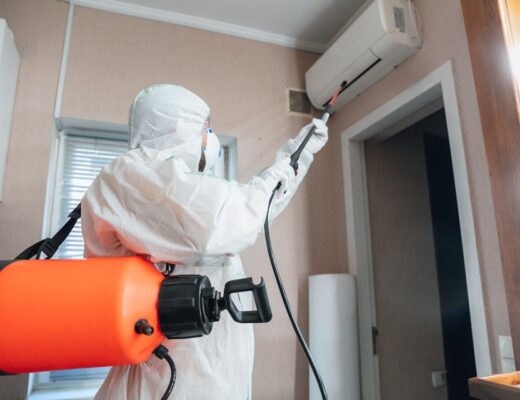Many homeowners have ponds for both aesthetic and practical reasons. However, a neglected pond can quickly become an eyesore and an embarrassment. Look for signs such as out-of-control algae growth, wet spots around your water feature, and dirty water. Fortunately, these problems are easy to fix! Read on to find the best solutions for restoring your pond to its original glory.
Chemicals
The pond liner type and overall condition can also affect the cost of pond cleaning. Some liners are more prone to tearing and may require a unique repair process requiring specialized tools or equipment, which can add to the final cleaning cost. Ponds are closed aquatic ecosystems that can become overwhelmed by nutrient pollution from lawn fertilizers, grass clippings, or waste from wildlife, including birds, geese, ducks, and fish. These pollutants can quickly push algae blooms from healthy levels to unhealthy overgrowth, resulting in unsightly and smelly layers of muck and sludge.
To avoid this, install a fountain or bubbler that circulates and oxygenates the water, reducing sediment that creates the need for dredging. Additionally, use Nature’s Pond Cutter n’ Rake to remove unwanted aquatic vegetation manually, saving hundreds of dollars in professional cleaning costs. It even includes a floater option to cut and rake weeds in shallow water. Then, apply Nature’s Pond Conditioner, which consumes and breaks down phosphorus, nitrogen, cyanobacteria, and other polluting nutrients that cause algae blooms and harmful muck and sludge.
Bottom Aeration
Unlike surface aerators, bottom-diffused aeration systems use much less energy and do not require electricity. They also have fewer moving parts and, with routine pond maintenance, have long lifecycles. A near-universal consensus is that bottom aeration is more effective than surface aeration. When water becomes stagnant, layers of significant temperature differences form between calmer surface waters and warmer, more profound levels. These oxygen-deprived layers often cause fish-kill events. By circulating the lake or pond, aeration eliminates temperature stratification.
Aeration helps the bottom of your lake or pond become more oxygenated and becomes a massive bio-filter. It encourages populations of beneficial bacteria that reduce toxic gas production, digest organic bottom muck (also known as pond muck), and limit nutrient sources for nuisance aquatic growth. This GREEN approach to water management is the most cost-effective way to increase dissolved oxygen levels, improve overall water quality and circulation, and reduce algae vegetation blooms. It is also an excellent solution to help avoid the need for costly draining and refilling of your pond.
Cutter N’ Rake
Often, pond weeds and algae thrive in imbalanced water quality conditions. Fountains and aeration help interrupt areas of stagnation and introduce dissolved oxygen into the water, making it more difficult for nutrient-rich muck and detritus to become a breeding ground for weeds and algae. Regular nutrient testing by aquatic experts helps track important water quality characteristics and identify negative trends. A rake is crucial for keeping the water’s edge clear and free of organic material contributing to weed and algae growth. It also helps prevent muck and debris from flowing into the middle of your pond, where it can create more problems by contributing to low dissolved oxygen levels, foul odors, and nuisance aquatic vegetation. Regularly sanitizing and sharpening its tines is essential to keep a pond rake effective. It will ensure the Rake remains solid and practical. Also, store it in a dry area to prevent damage and corrosion.
Aerators
Aeration keeps pond water moving, which is good because nutrient pollution can quickly push algae out of control. Algae isn’t harmful; it provides oxygen via photosynthesis, but it can choke the water when it grows out of control. A pond aerator uses tubing to push air through diffusers on the bottom of the pond, which causes a column of bubbles to rise to the surface. This process lets in much-needed dissolved oxygen and gasses out carbon dioxide, which keeps the water cool in summer and prevents ice from forming in winter. Aerators also help with mosquito control; since mosquitoes still need water to breed, aeration keeps the water flowing and makes it harder for them to lay eggs. The best aerators on the market cost less than $70 a month to run.








No Comments